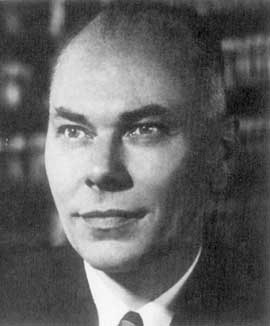

Aiken worked at: Madison Gas 1923-28; General engineer,
Westinghouse Electrical and Manufacturing Company 1928-31; Line Material
Company 1931-32; Harvard University Master's degree in physics 1937 and
doctorate in physics 1939. He wanted to created an
automatic calculating machine which could handle most mathematical
functions. He began
research on large-scale calculating machine with IBM in 1939. At Harvard
University he
was: Faculty instructor 1939-41; Associate Professor 1941-46; Professor
1946. He was
Director of Computation Laboratory from 1947-1961. He was a Professor
of Information
Technology at Miami University 1961-1973.
He completed the Mark I in 1944. The Mark I was
different from Bush's differential
analyzer, because it could solve almost all mathematical problems.
(Bush's machine only
solved differential equations.) Mark I was important, since it was
available to people
outside of the government. Mark I was electromechanical rather than
electronic.
At the Computation Laboratory, Aiken completed new work/findings in
mathematical
linguistics, the automatic translation of languages, switching theory,
and the use of magnetic
cores and drums as computer components. He served as Editor of Annals
of the
Computation Laboratory.
He began construction on the Mark II for the Dahlgreen
Proving Ground of the Navy's
Bureau of Ordnance in 1945. Unlike the Mark I, the Mark II was built
with
electromagnetic parts. The construction of Mark III completed in 1950
and was called the
Aiken Dahlgreen Electronic Computer (ADEC). The Mark IV was completed
in 1952 for
the US Air Force. Aiken also helped create a computer science program
as well as a
computing center at University of Miami. He founded Howard Aiken Industries
Inc., a
New York consulting firm.